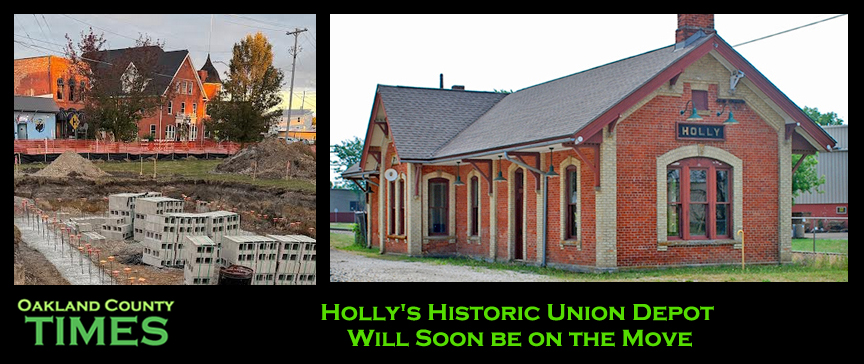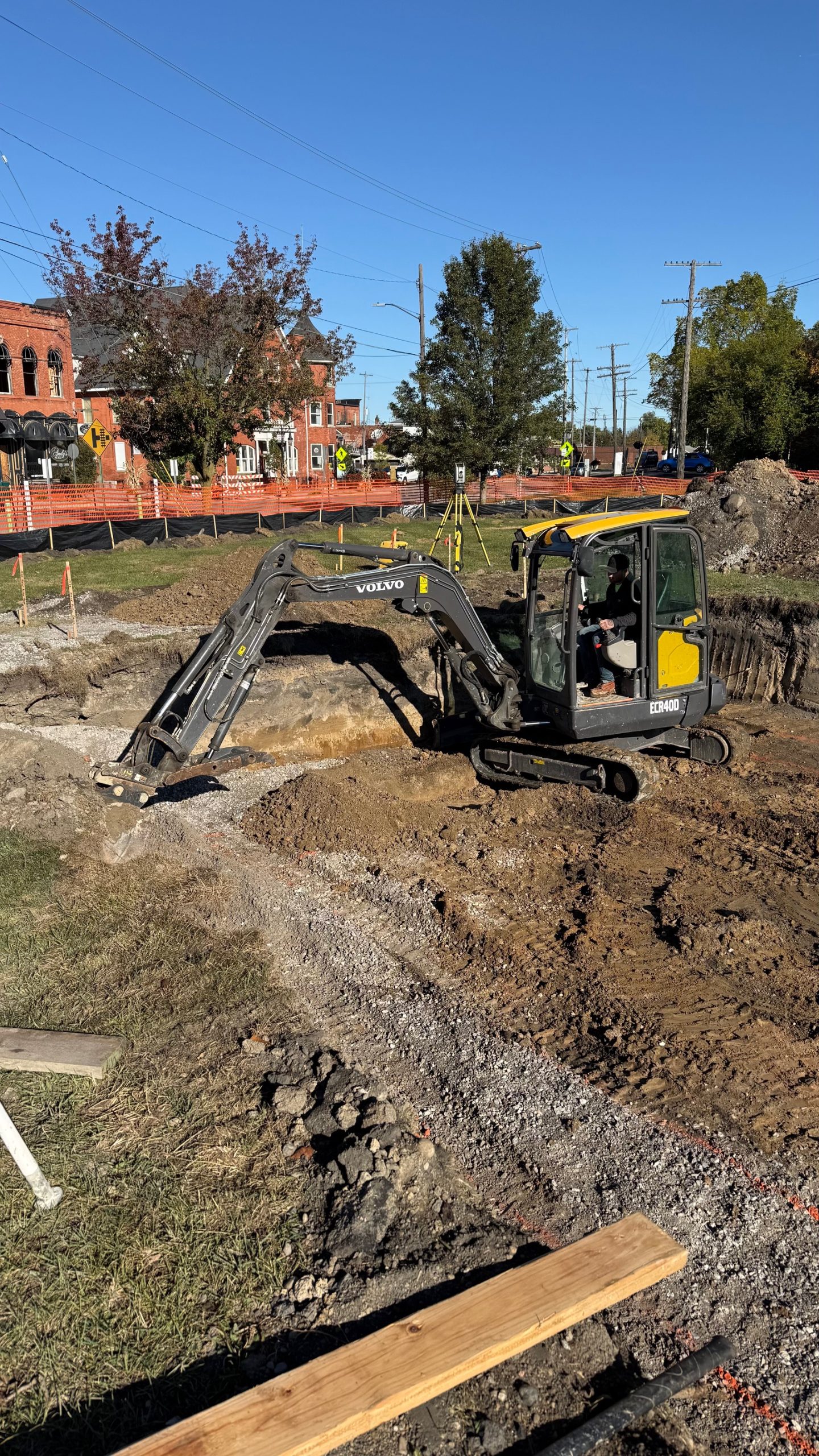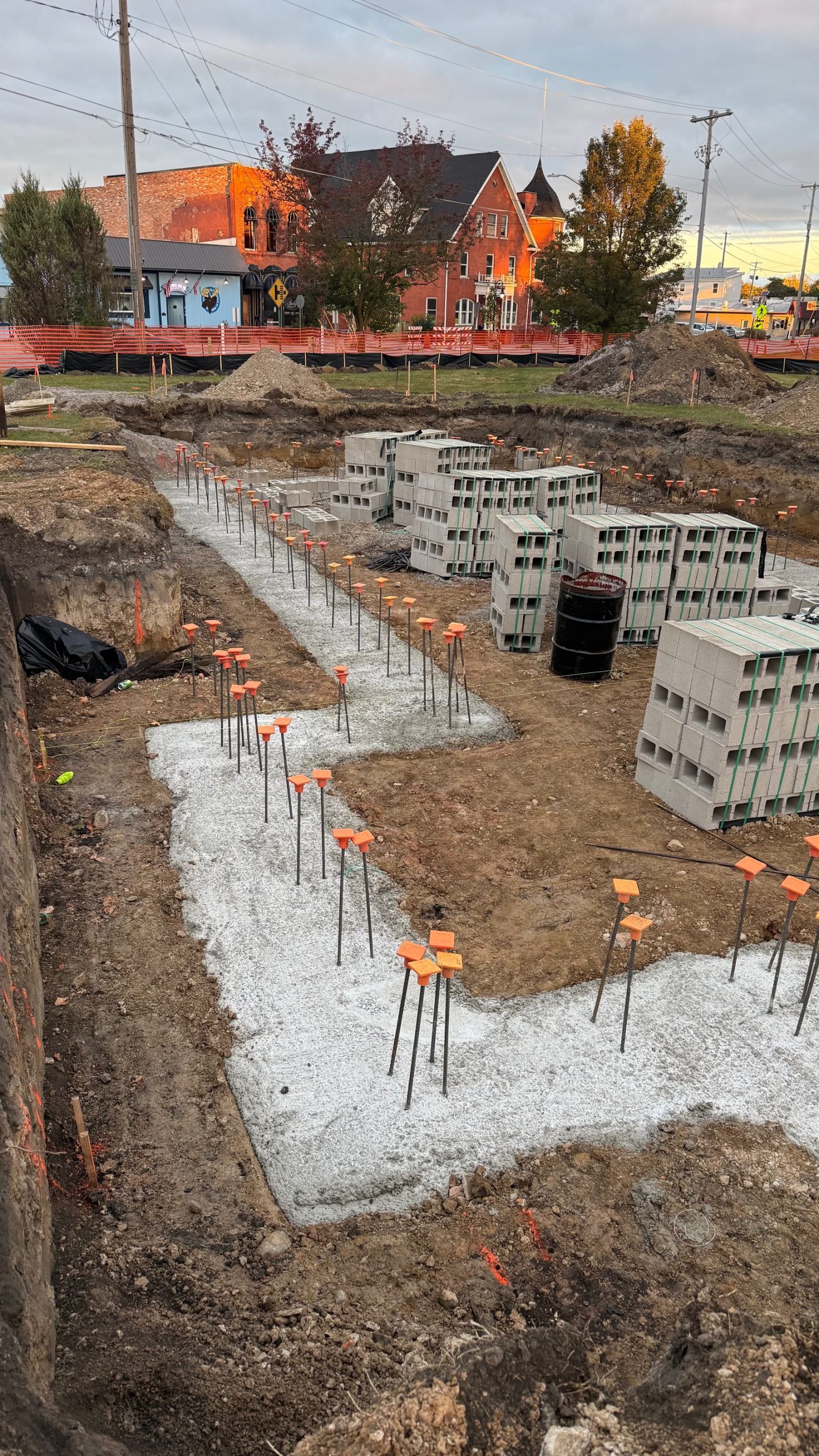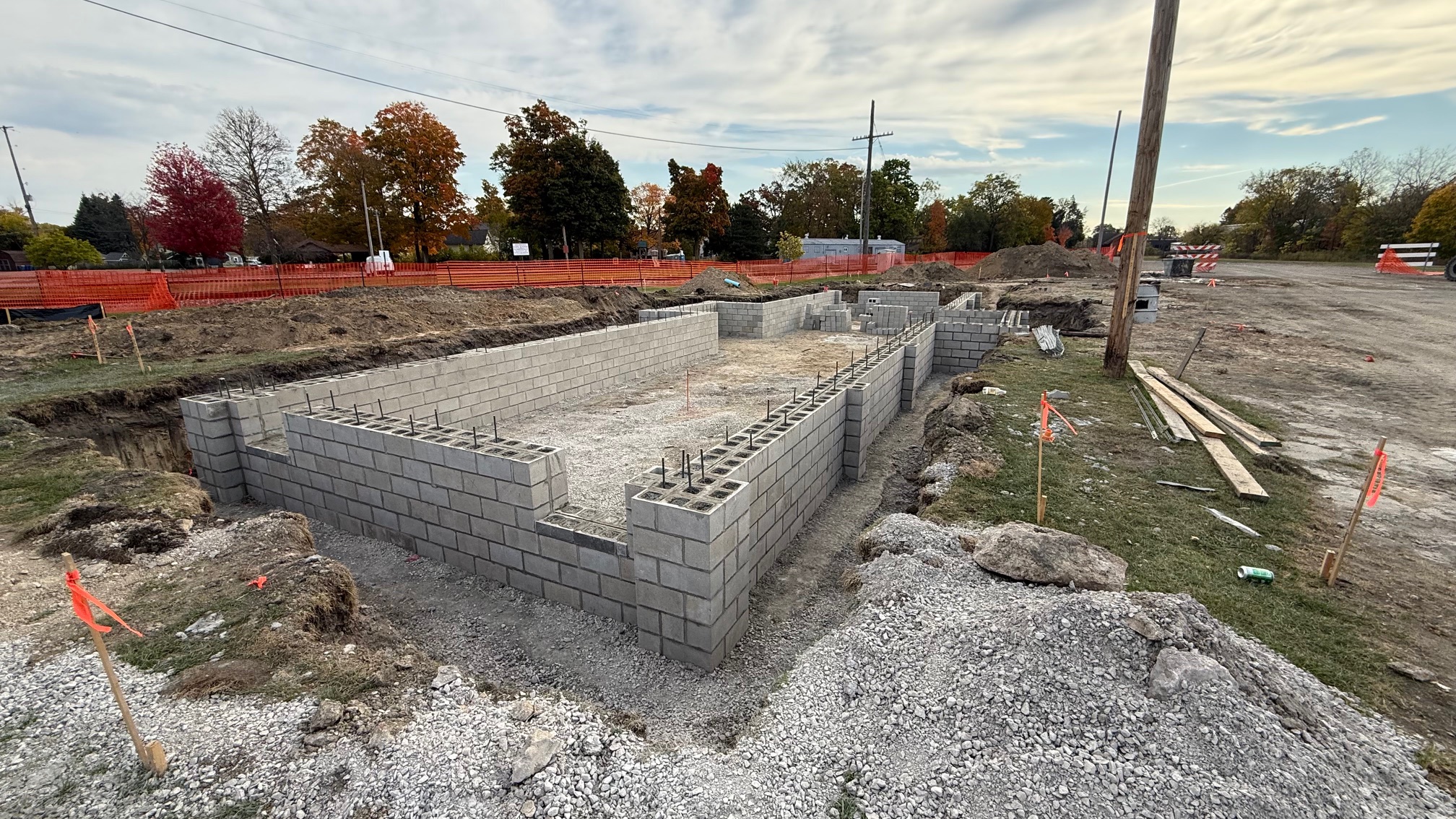Holly’s Historic Union Depot Will Soon be on the Move
(Crystal A. Proxmire, Oct. 22, 2025)
Holly, MI – After years of planning and fundraising, the historic Holly Union Depot is finally being moved.
Passers-by can see prep work being done on both the building and it’s future site, and by late November, if all goes well, the move itself will take place.
The depot is being relocated because it it’s current location it is too close to active railroad lines to be accessed by the general public. Moving the depot closer to the bustling downtown not only saves a piece of Holly history, but opens up the potential for making it an active space again.
The Holly Union Depot is named not for the Army or for organized labor, but for the simple fact that it exists at the point where two railroad lines meet.
The depot was built in 1886, replacing an 1865 depot which had burned in 1884. The new depot had two waiting rooms, with one solely for women. The Holly Union Depot also had a lunch counter. And in times of war women used the depot to distribute meals to soldiers. And in 1908 the depot was where prohibitionist Carry Nation arrived in town on her quest to rid the world of “demon rum.” The Depot served passengers until about 1964.
Peter Stouffer is the Project Manager overseeing the move.
According to Stouffer, in the 1980s the owner of the railway wanted to demolish the building. It was unable to be used because of its proximity to the tracks and has sat vacant for decades. Community members didn’t want to see part of history be torn down, so in the 80s and 90s a committee got together to raise money to buy the building and put it on the National Historic Register.
The committee did some restoration work, including repairing bricks, lighting, heat and air conditioning, and the roof. In the early 2000s the right of way rules for railroad tracks changed, meaning the building was too close to be accessed, and by 2019 enough interest had built up to actively revive efforts for a move. Led by then DDA-Director Katy Golden and subsequent Director Nick Klempp, along with other concerned community members, funding was raised for the move.
The next step, Stouffer said, was to “find a place to put it.”
Villagers aimed to keep the depot close to its original part of town, in the open are between the tracks and the buildings of the core downtown. The village purchased three lots from one of the railroad companies closer to Broad Street. In order to maintain their historic designation, the building must keep the same orientation, and must stay as true to the original layout as possible.
Prep work was done on the new site earlier this year, including removal of a tree and staking the location. Holly DPW did some prep work on the depot, including flooring and window repair, as well as brick and woodwork repair.
The move had been scheduled for April, but the costs forced the committee to seek out a new moving company, and more structural prep work was needed. “With a building this old, we’re doing everything we can to make sure it doesn’t collapse,” Stouffer said.
Handling the move is Wolfe House and Building Movers. “It was important to find a vendor within our budget that’s knowledgeable about moving an historic building,” Stouffer told Oakland County Times.
Once the depot is moved, there is still work to be done. The building will need to be rehabbed, including structural components, paint, and whatever happens to break during the move.
Next the external details will need to be attended to, including landscaping, fencing, pathways, and lighting.
There will also be discussions about what the building will be used for. The Village of Holly owns the building, which it purchased in 1999 for $1. The Village also purchased the property for the new location, roughly around 2019 according to Stouffer, at a cost of $35,000. The Village Council also issued a Proclamation of Intent that the building would be used by the Village for the public and would not be used for offices, or retail, or sold.
Stouffer said the building could be a visitor’s center, where people can learn about Holly history, including railroad history, as well as get a map of the community. It can also be used as a hub for visitors or volunteers during the community’s many festivals and events.
The project has been a labor of love, made possible by several grants, fundraisers, and donations. Thus far about $900,000 has been raised. “This gets up through Phase Two,” Stouffer said, which includes the cost of the move.
Bringing the depot to a place where it can be fully utilized will cost an additional $500,000 – $800,000. “I’m not focused on that part yet,” Stouffer said. “My only focus now is moving it. It will be a lot easier to fund raise once people see it happening. It’s all one step at a time.”
An optimistic goal, he said, is to have the building functional by the Village’s 250th birthday, which is July 4, 2026.
In addition to the brightness of future possibilities, there are two things about the depot that make this an exciting project for Stouffer.
“I’m so proud we’ve been able to do this without using any tax money,” he said. “We’ve gotten grants and private donations. From the smallest dollar or two, up to some significant gifts, the community has come together on this.” Most recently the estate of Tom McKenny, former Village President, local attorney, and lifelong resident, contributed $25,000 towards the move.
Others have stepped up to provide services, including John Lowe Excavating which did the digging of the foundation at no charge.
Main Street Oakland County provided hundreds of hours of design and in-depth technical assistance through Historic Preservation Architect Ron Campbell. Main Street Oakland County also granted over $400,000 through the Public Spaces and Placemaking Grant Program, made possible by the Oakland County Board of Commissioners with funding from the American Rescue and Recovery Act.
Another grant was a $150,000 National Trust for Historic Preservation Grant in partnership with American Express, through the Main Street program.
The other exciting thing to Stouffer and others working on the project is the historical significance of the endeavor. “This is critical to why Holly exists. I don’t think Holly would be here is the depot wasn’t here,” he said. “Future generations need to know this part of Holly’s history.”
The website HollyUnionDepot.org gives more information about the depot and the efforts to save and relocate it. For more information about donations, contact If you would like more information on donating contact ddadirector@hollyvillage.org

















 Save this post to PDF
Save this post to PDF Print this post
Print this post